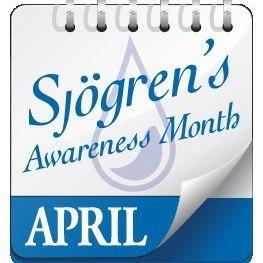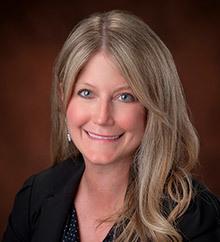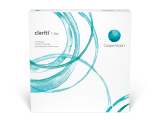
In honor of Sjogren’s Awareness month, Casey Hogan, OD, FAAO of Advanced Eye Care Associates in Oak Lawn, Illinois and founder of the Chicago Dry Eye Center provides some insights and patient management tips for eye care practitioners. Dr. Hogan writes:
The goal of this campaign, sponsored by the Sjögren’s Syndrome Foundation, is to help educate the public about this complex disease and how it affects those who live with its numerous daily manifestations. Today, more than four million Americans are living with this disease. It is one of the most common autoimmune diseases the eye care provider (ECP) will encounter in practice, and often ocular dryness or contact lens intolerance may be the presenting symptoms expressed to the ECP.
What is Sjögren’s Syndrome?
Sjögren’s Syndrome (SS) is a chronic systemic autoimmune disease, characterized by lymphocytic infiltration of the secretory exocrine glands, involving the salivary and lacrimal glands.1-2 This glandular infiltration leads to inflammatory destruction of tissue resulting in xerophthalmia and xerostomia, traditionally known as the “sicca syndrome”. It is important to note that SS is multisystem in nature, and extra-glandular manifestations occur in more than 30% of cases.2
The Sjögren’s Syndrome Foundation (SSF) initiated development of clinical guideline recommendations for healthcare providers in 2010. Representatives from rheumatology, oral medicine/dentistry, and eye care providers collaborated to evaluate the recent literature and develop recommendations for these clinical guidelines.3 In 2016, the first ever U.S. Clinical Practice Guidelines for Ocular Management in Sjögren’s were published based on the eye care subcommittee contributions and the 2007 International Dry Eye Workshop (DEWS I) report.4
The clinical guidelines for ocular management recommend contact lenses as a Level 3 treatment option for aqueous deficiency with or without meibomian gland disease. Scleral lenses and daily disposable contact lenses can be very effective in the management of refractory Sjögren dry eye disease, and the new published guidelines provide scientific evidence-based support for the use of contact lenses.
Get Involved
ECPs can join the campaign by visiting www.sjogrens.org to learn more on how to go “Bold Blue” for a day in honor of SS and raise awareness by utilizing SSF’s #ThisIsSjögrens social media campaign.

Dr. Hogan graduated from ICO where she also completed a primary care & ocular disease residency. She followed with an anterior segment fellowship at Boston University’s prestigious Boston Medical Center. A former assistant professor at ICO, she continues to serve as adjunct faculty for their cornea & contact lens residency program. She is a member of the ICO Leadership Circle, a Fellow of the American Academy of Optometry, a member of the AOF President’s Circle, and a diplomate of the American Board of Optometry. She is the immediate Past President of Special Olympics Chicago and is active with the Sjögren’s Syndrome Foundation, the Lupus Foundation of America, and the Scleral Lens Society.
Dr. Hogan is the founder of Advanced Eye Care Professionals, PC, the Chicago Dry Eye Center of Excellence, and the Chicago Scleral Lens Center of Excellence. Her clinical passion lies in ocular surface disease, specialty contact lens care and autoimmune disease awareness. She has been honored with the 2012 ICO Humanitarian of the Year Award, the 2015 Cooper Best Practices Award and most recently, the 2016 Anne McGlone Burke Award for her commitment to inclusion and special needs.
References
Both T, Dalm V, Martin D, van Hagen M, et al. Reviewing primary Sjogren’s syndrome: beyond dryness- From pathophysiology to diagnosis and treatment. Int J Med Sci. 2017 Feb 23;14:191-200.
Franceschini F, Cavazzana I, Andreoli L, Tincani A. The 2016 classification criteria for primary Sjögren’s syndrome: what’s new? BMC Med. 2017 Mar 31;15:69.
Foulks G et al. Clinical Guidelines for Management of Dry Eye Associated with Sjögren Disease. T. Ocul Surf 2015 April 13;2: 118 – 132.
Foulks G et al. The Sjogren’s Syndrome Foundation Clinical Practice Guidelines. 2015 ACR/ARHP Meeting. Abstract Presentation.





